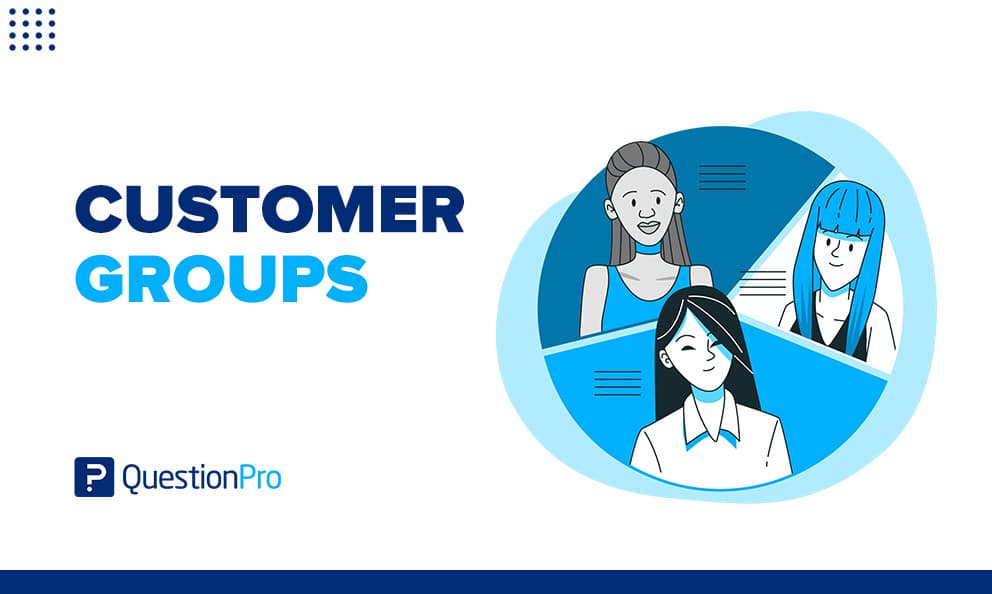
Customer groups can be a powerful way to maximize your value. You may find that you have customers who want the exact solution for different projects but require slightly different features or support options. For example, you might sell an email marketing tool but realize that all of your small business clients want a simple way to contact their customers.
Your enterprise clients need complete customization capabilities, so you create different products for each group with all the same features. Let’s talk about how to build customer groups are why they are valuable.
What are customer groups?
Customer groups are assemblages of customers who collaborate to consume data from a particular topic and then deliver feedback. In each group, the information sections are divided among the customers; therefore, a useful way to re-use the information given to cover all angles is to reallocate it as new members arrive and older members depart so that each member receives a proportionate share.
In simple words, customer groups bring together prospective buyers/customers who have similar needs and respond similarly to marketing efforts and maximize your value proposition.
How to create a customer group
To collect relevant data, you must make sure you’re grouping your customers properly to target the right audience and obtain data accuracy.
Market segmentation or customer groups are usually done on five levels: Demographic segmentation, psychographic segmentation, behavioral segmentation, geographic segmentation, and firmographic segmentation. Each level represents an opportunity for specific data collection that translates into targeted business efforts and product segmentation.
Where can I use customer groups?
Customer groups serve multiple purposes: to support your marketing efforts to increase your customer base, create loyalty, and build a relationship with your potential.
Already existing clients, another common usage of groups is to sustain your business strategy. The data collected can help you target accurate and realistic goals for your operation, bringing to light the main areas of opportunity in your know-how.
What are the different customer groups?
Identifying each type of customer allows you to make business-oriented decisions, taking advantage of each trait in their group.
-
Loyal Customers
All businesses rely on customer loyalty that invests their time and money in their brand to succeed. And it’s imperative that you take care of your loyal customers.
They might represent a small percentage of your client base; however, studies have shown they usually generate the majority of your income while also allowing new products or services to be tested because their loyalty is generally to the brand, not the product.
-
Impulse Shoppers
This group represents a gold mine when it comes to revenue. Consumers who surf products and services without having any particular purchasing goals are known for their large spending. And just like loyal customers, they also represent a great opportunity for new products to be introduced by impulsive buying.
-
Bargain Hunters
Bargain Hunters shine for their hunger for a great deal; they are usually out for blood regarding price, quality, and delivery time. They’re not easy to sway; they rarely become loyal customers or brand ambassadors as their fidelity to saving and novelty variables.
-
Wandering Consumers
Wandering customers are a mixed group of customers because they’re impulse buyers without the likelihood of completing the purchase; they usually ramble about, as their name implies.
-
Need-Based Customers
Easy, fast, proactive, practical customers, this group represents the mindset of “I need it, I see it, I got it” this is how you usually turn them into loyal customers; by providing fast solutions to their needs, it is also imperative to be the first in delivering since this type of customers are easily lured away into the competition.
LEARN ABOUT: Consumer Decision Journey
How to Leverage Your Consumer Groups & CTA
Customer acquisition and leveraging are challenging tasks for any business. Trying to sort out what’s most important from data can be complicated; that’s why our software allows you to interpret information quickly and make informed and intelligent business decisions.
To do this, you can use your own segmented databases or opt for the use of online panels.
QuestionPro Communities software is the only market research tool you’ll need. Explore the only tailored-to-your-needs platform and start conducting your own research as soon as possible.







